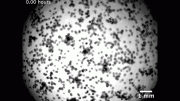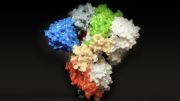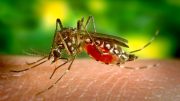
Scientists have identified a method for speeding up the body’s reaction to the consumption of alcohol, speeding up the elimination of alcohol from the body.
UCLA-led researchers have developed a “pill” that uses two enzymes to mimic the action of the human liver in fighting alcohol intoxication.
In a discovery that could derail the popular “Hangover” movie franchise, a team of researchers led by engineer from the University of California, Los Angeles (UCLA) has identified a method for speeding up the body’s reaction to the consumption of alcohol.
In a paper published online on February 17 in the peer-reviewed journal Nature Nanotechnology, Yunfeng Lu, a professor of chemical and biomolecular engineering at the UCLA Henry Samueli School of Engineering and Applied Science, and his colleagues describe successfully placing two complementary enzymes in a tiny capsule to speed up the elimination of alcohol from the body. The enzyme combination within the capsule essentially processes alcohol the way the liver does.
Lu, the principal investigator, said the enzyme combination could be ingested as a pill, chemically altering alcohol in the digestive system, even as the liver does its work.
“The pill acts in a way extremely similar to the way your liver does,” Lu said. “With further research, this discovery could be used as a preventative measure or antidote for alcohol intoxication.”
Naturally occurring enzymes within cells often work in tandem to transform molecules or eliminate toxins. Lu’s group assembled multiple enzymes to mimic the natural process. An enzyme known as an alcohol oxidase, for example, can promote the oxidization of alcohol but also produces hydrogen peroxide, which is toxic. Another type of enzyme, a catalase, prompts the decomposition of hydrogen peroxide into water and oxygen. Placing the two enzymes next to each other can effectively remove alcohol.
The researchers placed the two enzymes in a polymer capsule measuring just tens of nanometers in diameter. The wall of the polymer capsule is only one nanometer thick — about 100,000 times thinner than a strand of human hair. The capsule protects the enzymes and allows them to freely enter an alcohol molecule. In this way, the nanocapsule mimics an organelle, a structure found in cells that spurs chemical reactions.
The researchers used a mouse model to test how well the enzyme package worked as an antidote after alcohol was consumed. They found that blood alcohol levels in mice that received the enzyme package fell more quickly than in mice that did not. Blood alcohol levels of the antidote test group were 15.8 percent lower than the control group after 45 minutes, 26.1 percent lower after 90 minutes and 34.7 percent lower after three hours.
In a test of how well the enzyme delivery system worked as a prophylactic when consumed at the same time as alcohol, the researchers found that blood alcohol levels in the mice that received the enzymes were 10.1 percent lower than in control-group mice after 45 minutes, 31.8 percent lower after 90 minutes and 36.8 percent lower after three hours.
“Considering the vast library of enzymes that are currently or potentially available,” the authors write, “novel classes of enzyme nanocomplexes could be built for a broad range of applications.”
Reference: “Biomimetic enzyme nanocomplexes and their use as antidotes and preventive measures for alcohol intoxication” by Yang Liu, Juanjuan Du, Ming Yan, Mo Yin Lau, Jay Hu, Hui Han, Otto O. Yang, Sheng Liang, Wei Wei, Hui Wang, Jianmin Li, Xinyuan Zhu, Linqi Shi, Wei Chen, Cheng Ji and Yunfeng Lu, 17 February 2013, Nature Nanotechnology.
DOI: 10.1038/nnano.2012.264
The study’s lead authors included Yang Liu and Juanjuan Du of UCLA Engineering’s chemical and biomolecular engineering department.
Additional authors of the research include Wei Wei of UCLA Engineering; Ming Yan of UCLA Engineering and the UCLA Department of Microbiology, Immunology and Molecular Genetics; Mo Yin Lau, Jay Hu, Hui Han and Cheng Ji of the Keck School of Medicine at the University of Southern California; Dr. Otto O. Yang of the David Geffen School of Medicine at UCLA; Sheng Liang and Hui Wang of Xinhua Hospital, affiliated with China’s Shanghai Jiao Tong University; Jianmin Li and Wei Chen of China’s Beijing Institute of Biotechnology; Xinyuan Zhu of Shanghai Jiao Tong University; and Linqi Shi of China’s Ministry of Education and Nankai University.
The research was partially supported by the Defense Threat Reducing Agency, the National Institutes of Health, the National Natural Science Foundation of China, and the National Basic Research Program of China.









Be the first to comment on "UCLA “Hangover Pill” Mimics the Action of the Human Liver in Fighting Alcohol Intoxication"